#history of java
Explore tagged Tumblr posts
Text
Bahasa dan Sastra Kerajaan Bima Tahun 1947: Catatan H. Zollinger

Salah satu hal yang sangat penting dan mahal sebagai produk sejarah dan peradaban orang Bima adalah karena mereka memiliki aksara sendiri. Namun Bahasa dan aksara tersebut kini telah hilang. Aksara tersebut disebut dengan Engahie Mantoi. Ketika aku bertanya apakah masih ada orang yang mengetahui beberapa kata dalam Bahasa kuno tersebut? mereka menjawab “tidak ada”. Namun, di masa lalu ada beberapa orang yang masih mengingat beberapa kata dari bahasa ini. Tetapi naskah atau tulisan-tulisan dalam bahasa ini juga sudah tidak ada lagi. Kini tidak ada lagi penduduk asli yang tahu tentang hal tersebut. Aku lampirkan salinan aksaranya yang diberikan oleh Bumi Parasi Koe yang merupakan juru tulis Raja Bicara. (seperti dalam gambar, Pen). Di sisi lain Rafles juga pernah memuat salinan aksara kuno Bima tersebut dalam bukunya History of Java. Jika diperhatikan secara teliti, terdapat perbedaan antara aksara yang aku sajikan dengan aksara yang dimuat Rafles. Tetapi bentuk dasarnya dapat ditemukan di sebagian besar aksara tersebut. Yang berbeda dalam salinan yang dimuat Rafles adalah Pha, Ra, Tha, Ba, Da, Dha, Ka, Rha, Za, dan yang terakhir adalah Da. Sementara Za dalam salinan Rafles merujuk ke Dja di aksara salinanku, atau mungkin seharusnya mewakili Dsa. Da terakhir dalam lampiran Rafles mungkin lebih akurat daripada yang ada dalam salinaku. Karena dalam di salinanku sepenuhnya konsisten dengan Dha pertama. Oleh karena itu, ia harus menggunakan tanda di bawah No. XXVIIIb, dan bukannya tanda No. XXVIIIa. Di sisi lain, Rafles memiliki tanda yang sama untuk Dja dan Dsa, yang itu menurutku kurang tepat. Dia membuat tanda No. XI dua kali; sementara aku memberi tanda No. XXVI yang itu lebih tepat. Dengan demikian, seluruh aksara memiliki sistem bunyi sebagai berikut: : a, ha, wa, ja, ra, rha, la, sa, ma, na, nga, nja, ga, gha, ka, kha, ba, bha, nba, pa, pha, fa, da, dha, nda, ndha, dsa, dja, ta, tha, tja, tscha. Tanda No. I sebelum huruf berarti berbunyi e yang jelas dan tajam. Tanda No. II di belakang huruf menunjukkan bunyi o dan ò. Tanda No. III di atas huruf menunjukkan bunyi i. Tanda No. IV atau No. III di bawah huruf menunjukkan bunyi oe. Keempat karakter itu juga ditemukan dalam aksara Makassar. Tetapi dalam aksara Bima kuno tidak memiliki aksara yang ditempatkan di atas huruf dan menunjukkan bunyi êng. Yang mirip antara Makasar dan Bima adalah adanya system bunyi nga, nja, nba, nda, dan ndha. Sementara aksara Makasar memiliki perbedaan yaitu di bunyi nga, ngka, nra, nja dan ntja. Bahwa sebuah aksara muncul dari pergulatan waktu yang sangat lama yang lalu digunakan dalam waktu yang panjang pula. Namun ketika hari ini Bahasa dan aksara itu tiba-tiba hilang, aka hal tersebut menjadi sesuatu yang sangat misteri. Tidak ada dalam catatan sejarah penjelasan tentang hilangnya Bahasa dan aksara tersebut. Penjelasan irasional tentu tidak dapat diterima. Jadi bahasa dan tulisan apa sebenarnya itu? Mungkinkah bahasa dan aksara Polinesia yang hilang, atau salah satu anak Bahasa Polinesia? Pertanyan-pertanyaan tersebut membutuhkan studi mendalam dan lama untuk bisa dijawab. Aku tidak punya cukup waktu melakukan hal tersebut untuk melahirkan temuan yang akurat. Untuk Bahasa Bima yang digunakan hari ini, sangat berbeda dengan bahasa Melayu. Bahasa Bima lebih dekat dengan bahasa ibu di Timur. Bahasa Bima lebih sedikit kesamaan dengan Bahasa Melayu dibandingkan dengan bahasa Sumbawa dan Sasak yang banyak persamaan dengan Bahasa Melayu. Dari sudut pandang fonetik, yang unik dari Bahasa Bima adalah karena Bahasa Bima selain memiliki sistem bunyi ben k, juga memiliki bunyi f, misalnya afi, bukan api. Yang lebih luar biasa lagi adalah kekhasan Bahasa Bima dalam menggabungkan huruf vokal tanpa penyisipan huruf konsonan. Inilah karakteristik khas Bahasa Bima yang menunjukkan kekerabatannya dengan Bahasa-bahasa di timur hingga kepulauan laut selatan. Untuk memberikan gambaran yang jelas, aku tunjukkan bagaimana bahasa Bima memiliki tiga bunyi yang berbeda, dari e dan diftong a dan o , yaitu ò dan oh.
Berikut penggabungan yang ditemukan: ao dalam kata kao, sama dengan ketika menyebut kata krabben dalam Bahasa Belanda. Αò dalam kata na-ò, sama dengan penyebutan kata trouw di Bahasa Belanda. Aau dalam kata wa- au, seperti menyebut waarom. а ое dalam kata da-oe seperti mengucap kata indigo. ee dalam kata nè-è seperti pengucapan kata willen. ei dalam kata èï seperti di kata slaperig zijn. е ое dalam kata е-ое seperti di kata baden. io dalam kata tio. Ia dalam kata ia seperti di schelden. iï dalam kata triï seperti di kata urine. і оe dalam kata iha ïoe (flaauw vallen). oa dalam kata meloa seperti di kata verstandig. oi dalam kata oi niwa seperti di kata dierbaar. ò ò dalam kata ò ò seperti di kata bamboes. ò ое dalam kata do-oe seperti di kata mensch. ое-а dalam kata phaboe-a seperti di kata mocten. ое-ое dalam kata roe-oe seperti di kata voordeel. Hampir tidak ada kata yang tidak menggabungkan huruf vokal, bahkan ada yang gabungan tiga huruf vokal, seperti di: ka- oe-a untuk vokalnya. Jadi Bahasa Bima cenderung tidak hanya menghilangkan vokal akhir, tapi juga vokal tengah. Misalnya ta-ä yang di huruf Lontara mMakasar disebut tal-la. Dengan demikian ka-oe-a dapat ditelusuri ke Bahasa Melayu oerat, sama seperti oe-a di Kepulauan Sandwich dapat dirujuk ke kata oedjan (hujan). Dengan cara yang sama, ai (hari) dapat dikembalikan ke hari. Aku bisa memberikan ratusan contoh terkait hal tersebut. Di bab akhir aku telah membuat daftar kata dalam Bahasa Bima dan perbandingannya dengan Bahasa-bahasa lain di Pulau Sumbawa untuk melihat tingkat kekerabatannya. Setelah aksara kuno hilang, saat ini Bahasa Bima tidak memiliki aksara sendiri. Dan tidak ada naskah apapun yang bertuliskan aksara Bima. Semua naskah yang ada di Bima hari ini bertuliskan aksara Makasar dan huruf jawi (Melayu Arab). Jadi, orang Bima tidak memiliki literatur sendiri. Beberapa cerita sejarah, misalnya sejarah Indra Djamroet, ditulis dalam bahasa Melayu aksara Arab. Satu-satunya jejak ditemukan dalam Pantun, yang dinyanyikan dalam bahasa Bima. Aku tampilkan contohnya untuk melihat sistem bunyi dalam Bahasa Bima. Nahoekoe maroe sandini nifi Nahoekoe bola wali woe-a samada. Pahoe di gomie Da loa koe nefa. Saat ini orang di Bima menulis menggunakan tinta di atas kertas. Sementara dahulu mereka menulis dengan pisau kecil yang tajam di atas daun lontar. Wallahu’lam bish shawaab Ikuti kami untuk konten inspiratif setiap hari: Facebook: @batutercom Instagram: @batutercom Twitter (x): @batutercom Telegram: @batutercom Tiktok: @batutercom Youtube : @batuter
#Aksara#bahasa#Bima#Bunyi#History of Java#Juru Tulis#Kerajaan#Konsiten#Kuno#Makassar#Peniliti#Refles#Salinan#sastra#Sistem#Tanda#Zollinger
0 notes
Text
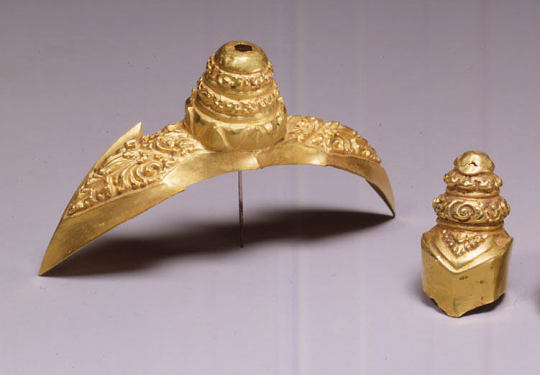
Gold hair ornaments with Kala motifs, Indonesia (Java), 8th-10th century
from The Metropolitan Museum of Art
121 notes
·
View notes
Text

WWI coffee break - wounded American GIs pause for coffee while recuperating in a Red Cross outpost NARA gif, NARA ID 8953.
Hooray, hooray, it’s National Coffee Day! ☕
Our records clearly show that coffee is a health food! See product label below.
COFFEE IS:
"A drink for the sick and the well"
"A drink for the young and the old"
"palatable, wholesome and nourishing"
"A drink for morning, noon and night."
"Healthful and delicious, wholesome and appetizing."

Coffee is a health food! Grains of Health Label, Records of the Patent and Trademark Office, Product label 1906, NARA ID 5714039.

Coffee samples from various areas are tested for taste and aroma by Sr. Aldo Cabella. Oficina Central de Cafe, Guatemala City, 4/3/1947. NARA ID 30805841.
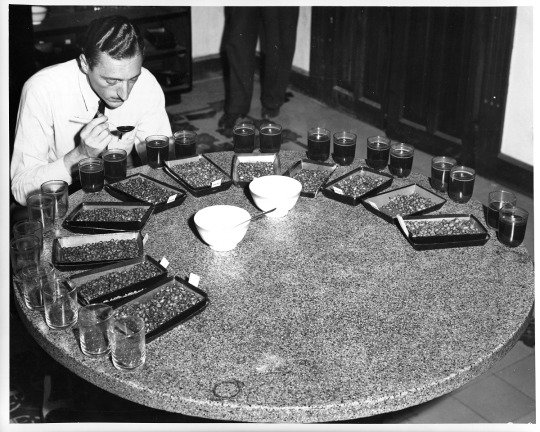
Coffee in SPACE!

Commander Richard Richards drinks coffee on the Space Shuttle Discovery's during STS-64, 1994. NARA ID 22837732
Glorious, glorious beans!

Coffee drying in concrete patio is turned at intervals to expose all beans to the sun. Finca Chocola. Guatemala. Mitchell. 13-17-45

Coffee at the North Pole?

Original caption: This image depicts Coast Guardsmen on a trawler in the Arctic enjoying a cup of coffee.

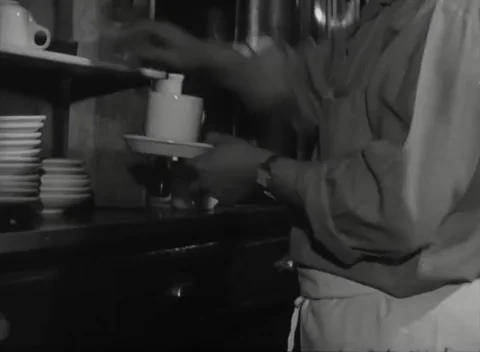
#National Coffee Day#Coffee Day#Coffee#Coffee History#Java#Cafe#Mocha#History#National Archives#National Archives Catalog
256 notes
·
View notes
Text
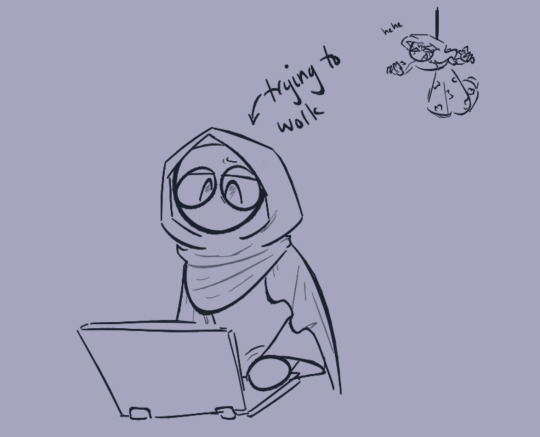


computer science is not my forte...
#minute doodles#fnaf moon#moon fnaf#moondrop fnaf#fnaf moondrop#minute sona#my sona#it's just java but gravity the way it's taught...#i'm a linguistics and history gal this isn't my thing...#delete later
50 notes
·
View notes
Text

Say hi to Sir Lady Java!
She was born in New Orleans in 1943. She transitioned at a young age with help from her mother and became a singer and dancer at local nightclubs. She was the first trans woman of color to perform in the L.A. nightclub scene. She was a fierce Igbtq+ rights activist while she was active.
#sir lady java#Lgbtinsbc#lgbt#lgbtq#queer#lgbt history#lgbtq history#queer history#trans#transgender#trans history#lgbt Louisiana#queer Louisiana
49 notes
·
View notes
Text
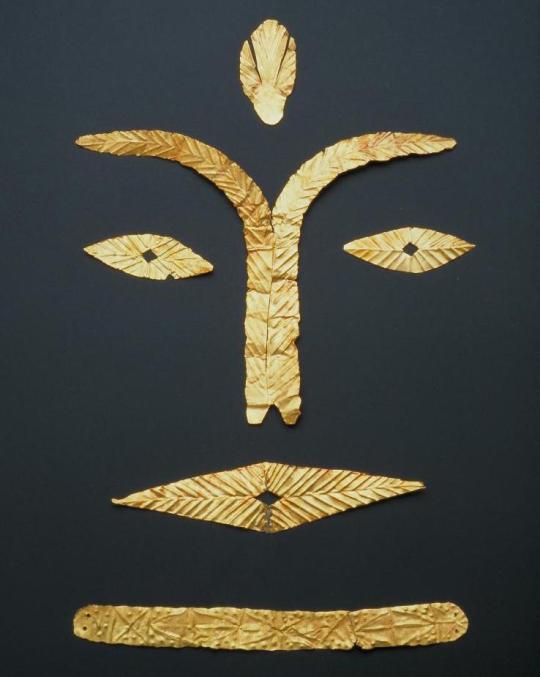
Funerary Face Cover, Java, Indonesia,
Preclassic Period (ca. 500 B.C.E. / 500 C.E.)
Gold,
Eye-Nose cover: 4.54 × 4.8 cm, 1.087 g, 0.01 cm (1 13/16 × 1 7/8 in., 1.087 g),
#art#history#design#style#archeology#sculpture#antiquity#mask#funerary#java#indonesia#preclassic period#gold#jewelry#jewellery
37 notes
·
View notes
Text

The Javanese in Sri Lanka represent a small yet historically and culturally significant ethnic minority group whose roots trace back to the island of Java in modern-day Indonesia. While today their numbers are relatively modest, their legacy reveals a complex tapestry of colonial-era migration, religious and cultural transformation, and assimilation within the broader Moor and Malay communities of Sri Lanka. The Javanese presence in Sri Lanka is deeply interwoven with the dynamics of European colonialism in Southeast Asia and the Indian Ocean world, particularly during the Dutch and British periods. Despite the limited size of the community, their influence has been disproportionately rich in terms of religious practice, cultural retention, and social history.

The migration of Javanese individuals to Sri Lanka began primarily during the period of Dutch colonial rule in the Indian Ocean, particularly in the 17th and 18th centuries. The Dutch East India Company (Vereenigde Oostindische Compagnie, or VOC), which had consolidated control over both Ceylon (modern-day Sri Lanka) and the Dutch East Indies (modern-day Indonesia), often transferred populations across its colonial holdings for administrative, military, and punitive purposes.
A significant portion of the Javanese population in Sri Lanka arrived not as voluntary migrants but as political exiles, slaves, or convicts. Many were members of the Javanese aristocracy or resistance leaders who opposed Dutch rule. These individuals, deemed a threat to colonial control, were exiled from Java to Dutch colonial outposts, including Sri Lanka. One of the most notable cases is that of Prince Susuhunan Pakubuwono II of Surakarta’s entourage and other noble figures who were exiled for their roles in uprisings or suspected subversion. Alongside these elites were soldiers and laborers, including artisans and religious figures, who were brought to Ceylon to serve in various capacities under Dutch command.
This forced migration created a diaspora community that was geographically dislocated but culturally vibrant, maintaining ties to Javanese customs, language, and especially Islam. The migration of Javanese to Sri Lanka also included people from other parts of the Indonesian archipelago, such as Madura and Sumatra, further enriching the ethnic mosaic that would come to be associated with the Sri Lankan Malays, among whom the Javanese would be culturally subsumed over time.

Over the centuries, the Javanese in Sri Lanka were gradually absorbed into the broader "Malay" community—a category that includes peoples from the Malay Archipelago brought to Sri Lanka during the Dutch and British colonial periods. This umbrella term has obscured the distinct ethnic identities of Javanese, Bugis, and other Southeast Asian groups, but it has also provided a collective identity that allowed these migrants and their descendants to maintain a degree of cultural cohesion.
The Malays in Sri Lanka, including those of Javanese descent, primarily settled in the coastal and urban areas of the Western and Southern provinces, including Colombo, Kandy, Hambantota, and Galle. These settlements were often established near colonial administrative centers or military installations where Malays served as soldiers in colonial militias, police, and other service positions.
Javanese linguistic influence in Sri Lanka has largely receded, with Malay and Sinhala being more commonly spoken among descendants. However, vestiges of Javanese vocabulary, particularly in ritual contexts and family heritage, persist in some Malay households. The use of Javanese honorifics, titles, and naming conventions was once common among elite Javanese families in Sri Lanka, especially those descended from nobility.

Religion has played a central role in preserving Javanese identity in Sri Lanka. The majority of Javanese migrants were Muslim, and their Islamic practices aligned with the broader Malay community, which facilitated communal integration. However, the form of Islam practiced by the Javanese often retained elements of Javanese religious culture, including Sufi mysticism and syncretic rituals rooted in pre-Islamic traditions.
Some of the earliest mosques established by the Malays and Javanese in Sri Lanka became centers of religious learning and cultural preservation. These institutions often taught Arabic, Malay, and basic Javanese texts, especially during the 18th and 19th centuries. The Mawlid celebrations, communal prayer sessions, and recitations often featured uniquely Javanese Islamic chants and devotional literature. In particular, Javanese-style Qur'anic recitation and religious poetry—such as syair—were prominent in religious festivities.
Traditional Javanese dress, culinary practices, and ritual customs survived in modified forms. For example, dishes such as "nasi goreng," "sambal," and "satay" made their way into the broader Sri Lankan Malay culinary tradition, although often with localized ingredients. Celebrations such as weddings, coming-of-age ceremonies, and religious festivals still bear traces of Javanese customs, such as batik garments, gamelan-inspired musical rhythms, and traditional Javanese court etiquette.

During the colonial period, Javanese-descended individuals, like other Malays, held positions in the colonial military and police forces. They were considered reliable by the Dutch and later the British due to their perceived loyalty and martial skill. These roles afforded some degree of upward mobility, though they remained socially marginalized compared to the majority Sinhalese and Tamil populations.
In post-independence Sri Lanka, the Javanese community—largely merged into the Malays—has maintained a modest but active presence in political, social, and religious spheres. Malay organizations such as the Sri Lanka Malay Confederation and local mosques have played crucial roles in advocating for minority rights and preserving cultural heritage. While the Javanese identity is often subsumed under the Malay label, some families continue to preserve genealogies and oral histories that trace their roots specifically to Java.
Javanese Sri Lankans have occasionally served as bridges between Sri Lanka and Indonesia, particularly in diplomatic and cultural exchanges. The Indonesian Embassy in Colombo has supported cultural preservation efforts and highlighted the shared heritage between the two countries, sometimes hosting events featuring Javanese dance, music, and cuisine to reconnect diasporic communities with their ancestral culture.

As with many small diaspora communities, assimilation, intermarriage, and modern urbanization have contributed to the erosion of a distinct Javanese identity in Sri Lanka. The younger generation is often more integrated into Sinhala or Tamil linguistic and cultural spheres, and many no longer speak Malay, let alone Javanese. Yet, there is a growing recognition among scholars and cultural activists of the need to document and preserve this unique historical legacy.
Academic interest in the Javanese of Sri Lanka has increased in recent decades, particularly within the fields of Southeast Asian studies, Islamic history, and migration studies. Researchers have focused on archival materials from the VOC, Dutch legal records, family trees, oral traditions, and religious texts to reconstruct the history of Javanese migration and settlement. These studies reveal a community that, while numerically small, made a meaningful contribution to Sri Lanka’s multicultural heritage.
Efforts to preserve the legacy of Javanese Sri Lankans have also included community-based oral history projects, digital archiving of old photographs and documents, and collaborative projects between Sri Lankan Malays and Indonesian cultural organizations. The story of the Javanese in Sri Lanka is increasingly seen not just as a local phenomenon, but as part of a broader narrative of Indian Ocean migrations and the transnational histories of Islam and colonialism.

The Javanese in Sri Lanka represent a microcosm of the broader diasporic experiences shaped by colonialism, forced migration, and cultural resilience. Though many have been absorbed into the larger Malay community, the distinct historical and cultural contributions of Javanese Sri Lankans remain an important part of the island’s diverse social fabric. Their legacy offers insight into the complexities of identity, heritage, and survival in the context of displacement and assimilation. As modern efforts to preserve this heritage grow, the story of the Javanese in Sri Lanka continues to enrich understandings of both Sri Lankan and Southeast Asian history.
#javanese#sri lanka#sri lankan history#javanese diaspora#indian ocean history#colonial history#ethnic studies#cultural heritage#malay sri lanka#islamic history#javanese culture#indonesian diaspora#southeast asia#sri lankan muslims#batik art#javanese traditions#forgotten histories#minority voices#sri lankan malays#diaspora culture#javanese aesthetics#historical migration#ethnography#sri lankan culture#indonesian heritage#java to ceylon#postcolonial studies#muslim communities#oral histories#island histories
2 notes
·
View notes
Text
Ear Ornaments—Java, Indonesia, late 700s to late 900s

These gorgeous ear ornaments are made of gold and inlaid with stones.
5 notes
·
View notes
Text
My thoughts on Jimmy Ong’s exhibition on Raffles (Warning: Kind of NSFW)
(Warning: It’s not recommended to view this if you are a Raffles fan, because this is kind of NSFW (and/or NSFL to a Raffles fan) because it contains nudity, as well as a sculpture of Raffles’ body without a head and limbs, being used as a charcoal grill.)
So, I recently learnt about this artist and his works at an exhibition in 2016. He did a series of black-and-white artworks and a couple sculptures of Raffles, with the theme mostly revolving around his actions during the invasion of Java in 1812, and nudity for some reason. The works can be viewed here:
There are some articles about this particular exhibition that explained the artist’s works:
The Mothership article explains it the best. Essentially, this exhibition is about the artist wanting to portray another side to Raffles that is contrary to the hero that Singapore regards him as. One of the artworks depict a Javanese goddess sitting on a Rafflesia and scolding Raffles in the nude, while another had him being tattooed on the thigh. I don’t really get why the artist had to involve nudity, but my thoughts on this exhibition in general is that it’s pretty interesting that a Singaporean was the one who created these works, rather than say, an Indonesian.
#raffles#stamford raffles#singapore#singapore history#historical#thefoundersofsingapore#Jimmy Ong#Exhibition#Java
2 notes
·
View notes
Text


Asian Civilizations Museum, Singapore
4 notes
·
View notes
Text
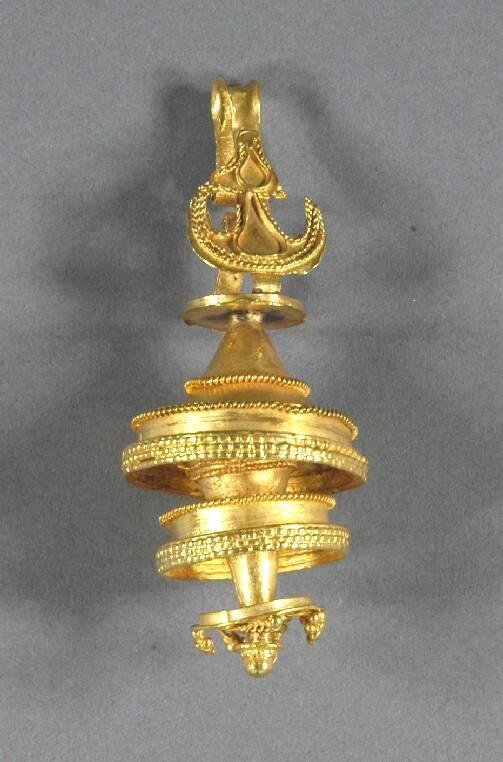
Gold ear ornament, Java, Indonesia, 7th-10th century AD
from The Museum of Fine Arts, Houston
127 notes
·
View notes
Text

Celeng (piggy bank). Java, Indonesia. 13th-15th Century CE.
Museum Nasional Indonesia.
#museum nasional indonesia#indonesia#indonesian history#java#javanese#animals in art#sculpture#early modern period#early modern history#pig#asian history
4 notes
·
View notes
Text
Yawa the goddess and yawa the expression might have arisen separately and have no connection with each other whatsoever. Nagmalitong Yawa figures heavily in the Sulod epic Hinilawod. The Sulod, or Bukidnon, was a loose group of highland dwellers in the island of Panay, consisting of the Panaynon, Agburin-on, etc. Yawa, the expletive, is commonly associated with eastern Visayans who speak Bisaya. There are no current studies that includes a goddess “Yawa” in the mythologies of Bisaya-speaking Visayans, so it’s highly possible that the Panay Yawa and the Bisaya yawa emerged in a convergent manner: right around the same time, but share no actual relationship.
Another line of investigation suggests that the denigration of Yawa might have occurred earlier, even before the Spaniards arrived in the archipelago. Sanjaya, progenitor of the formidable Sailendra dynasty of ancient Java, launched several offensives against many of his maritime neighbours to cement his kingdom’s place in the region. He had successfully defeated Srivijayan forces in the 8th century and even managed to annex parts of Cambodia. Academic transcriptions of Indonesian historical texts spell the name of their polity as “Yava”. Their expansive influence and naval conquests in the waters of southeast Asia may have given them a reputation of ruthlessness, so much so that in the traditional accounts, Airlangga, one of Java’s most prominent kings, first had to “struggle with ‘demons’ in central Java, a struggle that lasted from 1025 to 1037” to consolidate his rule in the central region. Over time and distance, pronunciations must have changed. What was once Yava or Jawa (in Indonesia, people from Java are called Orang Jawa), may have morphed into yawa in Bisaya tongues, and owing to their past military encounters with them, the Bisaya may have adopted it as a word to remember their enemies, their “demons”.
Excerpt from “History as a Progressive Fantasy Land” (2022) by Pippo Carmona
11 notes
·
View notes
Text

2 notes
·
View notes
Text
December 29th? Who could forget USS Constitution vs. HMS Java day!


A contemporary drawing of the naval battle by Thomas Birch c. 1813 (Library of Congress).

USS Constitution vs HMS Java, by Anton Otto Fischer c. 1960 (Naval History and Heritage Command)
#war of 1812#age of sail#naval history#uss constitution#hms java#on this day#royal navy#us navy#military history#thomas birch#anton otto fischer#naval art#the sea#1810s
6 notes
·
View notes
Text
I was a Java noob
At one time, every user was a newbie. Facebook recently reminded me of something I wrote 11 years ago today, when I was learning Java:
I'm still trying to wrap my mind around the notion that Java (apparently) implements write-once semantics for references and primitive types but lacks read-only semantics for methods or objects. I'm also wishing Java collections provided a copy constructor for iterators. Despite these flaws, its advantages over C++ are stark.
Looking back, here are my reactions:
In Java, the natural way to implement read-only semantics for methods and objects is to define a read-only interface. This is what the JOML library does, for instance. For each mutable class (Matrix4f, Quaternionf, Vector3d) it defines an interface (Matrix4fc, Quaternionfc, Vector3dc) with read-only semantics. I wish I'd known that trick in 2012.
Some of Java's advantages are historical. Gosling in 1995 foresaw the importance of threads and URLs, so he built them into the language. Stoustrup in 1982 did not foresee their importance. (Believe it or not, URLs weren't invented until 1994!)
Some of Java's advantages are because it didn't try as hard to maintain compatibility with C. For instance, Stoustrup was doubtless aware of the portability headaches in C, such as "int" having different limits on different architectures, but it seemed more important to be able to re-use existing C code in C++ than to fix fundamental flaws in the language.
Not sure why I wanted a copy constructor for iterators. Nowadays I rarely use iterators directly, thanks to the "enhanced for loop" added in Java SE 5. That feature was 8 years old when I learned Java. Not sure why I wasn't using it.
I love Java even more than I did in 2012. Nowadays I dread working in C/C++
#programming languages#java#computing history#c++ language#c++#facebook#software development#newbie#coding
4 notes
·
View notes